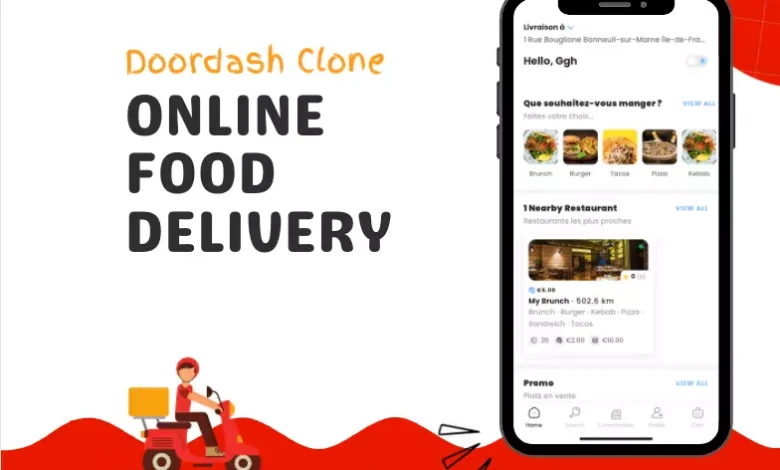How to Build an App Like DoorDash to Start a Food Delivery Service

In recent years, the food delivery industry has experienced exponential growth, driven by changing consumer preferences and technological advancements. Apps like DoorDash and its clones have revolutionized the way people order food, offering convenience and choice at their fingertips. If you’re considering building a DoorDash clone app to tap into this lucrative market, here’s a comprehensive guide to get you started.
Understanding the Market
Before diving into development, it’s crucial to understand the dynamics of the food delivery market. Conduct thorough market research to identify:
- Target Audience: Determine who your primary users will be (e.g., busy professionals, students, families).
- Competitors: Analyze existing players like DoorDash, Uber Eats, and Grubhub to identify gaps and opportunities.
- Trends: Stay updated on current trends in food delivery, such as ghost kitchens, contactless delivery, and eco-friendly packaging.
Defining Your Unique Value Proposition
To stand out in a crowded market, define a unique value proposition (UVP) that addresses the pain points of your target audience. Your UVP could focus on:
- Local Partnerships: Collaborate with local restaurants to offer exclusive deals and a diverse menu.
- Efficient Delivery: Promise faster delivery times or real-time tracking features.
- User Experience: Prioritize an intuitive interface and personalized recommendations.
Steps to Build Your App Like DoorDash
1. Market Research and Planning
- Identify Target Audience: Create user personas based on demographics, preferences, and behavior patterns.
- Feature Set: Define core features (e.g., user registration, restaurant listings, order management, payment integration, reviews & ratings).
- Technology Stack: Choose the right tech stack based on scalability, security, and platform compatibility (iOS, Android, web).
2. Designing the User Interface (UI) and User Experience (UX)
- Wireframing and Prototyping: Create wireframes to visualize app flow and user interactions.
- UI Design: Develop a visually appealing interface with intuitive navigation and brand-consistent aesthetics.
- UX Testing: Conduct usability tests to refine the app’s functionality and user journey.
3. Backend Development
- Server Selection: Decide between cloud-based or on-premise servers based on your scalability needs.
- Database Management: Choose a database system (SQL or NoSQL) that aligns with your data structure and performance requirements.
- API Integration: Integrate third-party APIs for features like payment gateways, location services, and push notifications.
4. Frontend Development
- Platform-Specific Development: Develop separate UI/UX for iOS and Android platforms.
- Cross-Platform Development: Consider frameworks like React Native or Flutter for simultaneous development across platforms.
5. Integration of Essential Features
- User Registration and Profiles: Implement secure user authentication and profile management features.
- Restaurant Listings: Display comprehensive menus, pricing, reviews, and ratings for partner restaurants.
- Order Placement and Tracking: Enable users to place orders, track deliveries in real-time, and receive notifications.
- Payment Gateway Integration: Integrate reliable payment gateways to facilitate secure transactions.
- Review and Rating System: Allow users to rate restaurants and delivery experiences, fostering transparency and accountability.
6. Testing and Quality Assurance
- Functional Testing: Ensure all features work as intended across different devices and OS versions.
- Performance Testing: Evaluate app performance under various loads to optimize speed and responsiveness.
- Security Testing: Conduct vulnerability assessments and implement robust security measures to protect user data.
7. Launch and Marketing Strategy
- Soft Launch: Release a beta version to gather user feedback and identify areas for improvement.
- Marketing Campaign: Develop a comprehensive marketing plan to attract users, leveraging social media, influencer partnerships, and promotional offers.
- App Store Optimization (ASO): Optimize app store listings with relevant keywords and visuals to improve discoverability.
Maintaining and Scaling Your App
- Continuous Improvement: Gather user feedback and analytics to iterate on features and enhance user satisfaction.
- Scalability: Prepare for growth by optimizing backend infrastructure and expanding your service area or partner network.
- Customer Support: Provide responsive customer support to address queries, complaints, and technical issues promptly.
Conclusion
Building an app like DoorDash requires meticulous planning, strategic execution, and a deep understanding of market trends and user preferences. By focusing on delivering value through exceptional user experience, robust technology, and effective marketing, you can carve out a successful niche in the competitive food delivery industry. Embark on this journey with a clear vision and dedication to innovation, and watch your app thrive in the dynamic landscape of modern-day food delivery services.
We also excel in enhancing app visibility and performance on the App Store through our specialized expertise in App Store Optimization Services at IndeedSEO. By leveraging our innovative strategies and meticulous attention to detail, we ensure that your app stands out amidst the competition, driving increased downloads and engagement. Trust us to optimize your app for maximum impact on the App Store platform.



